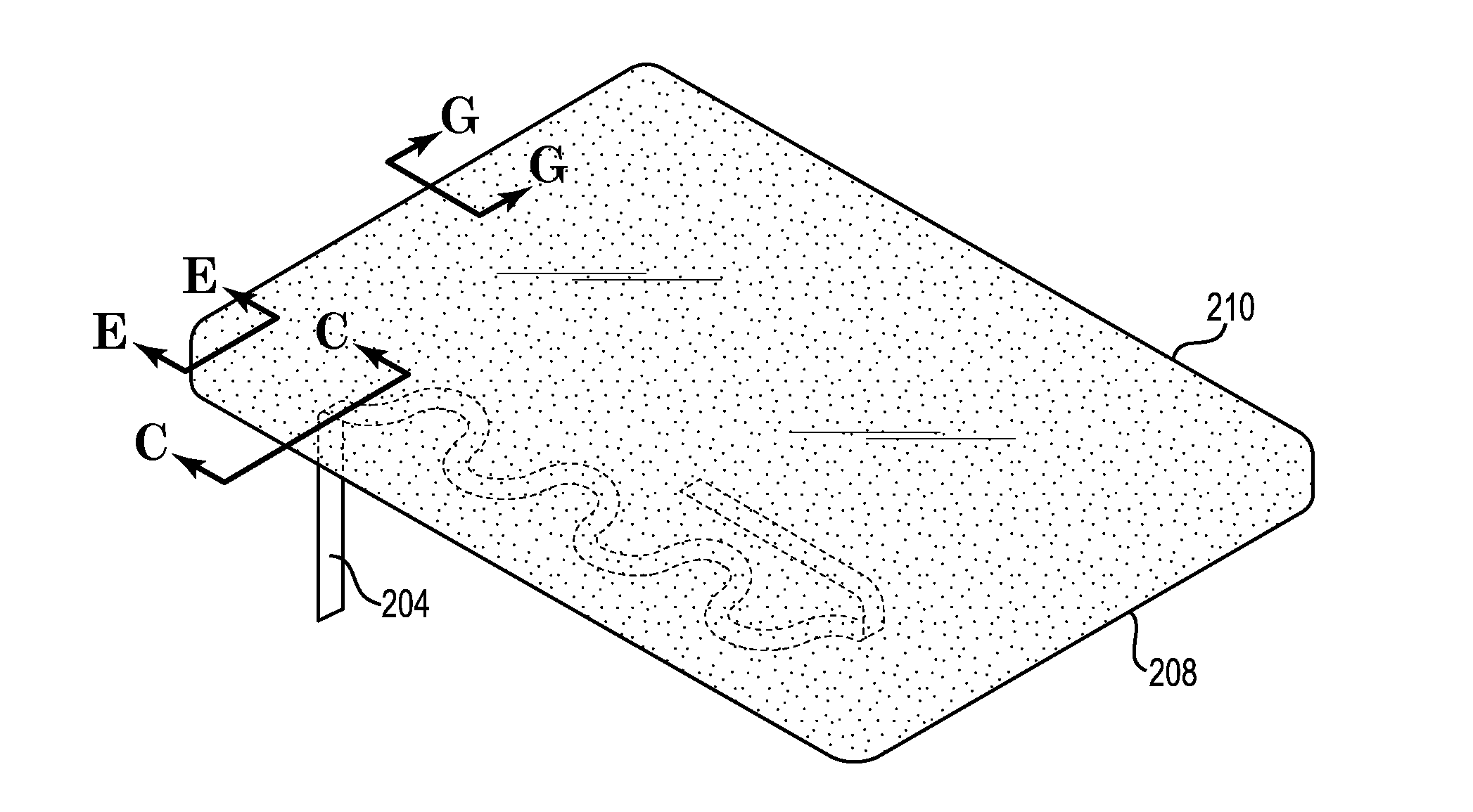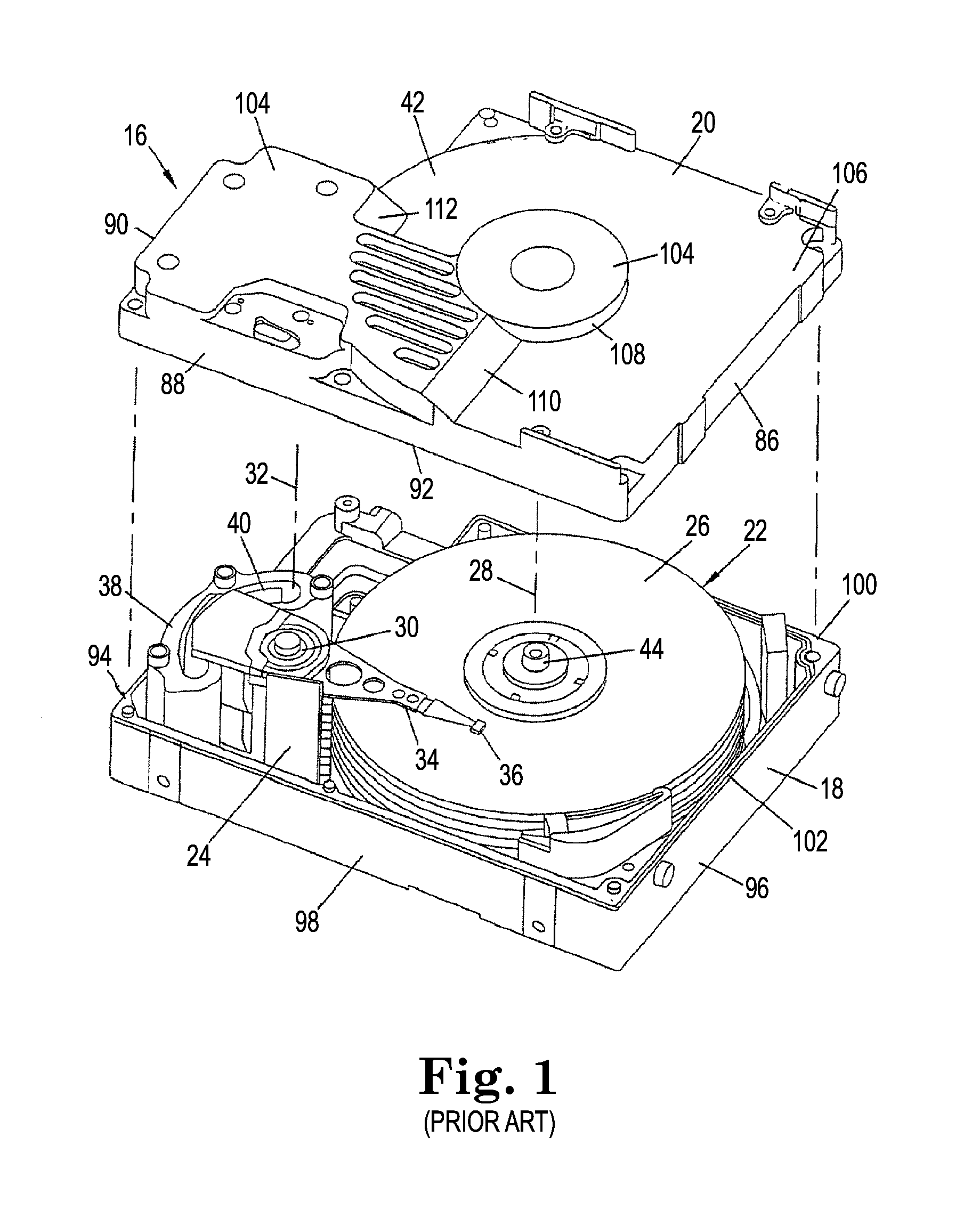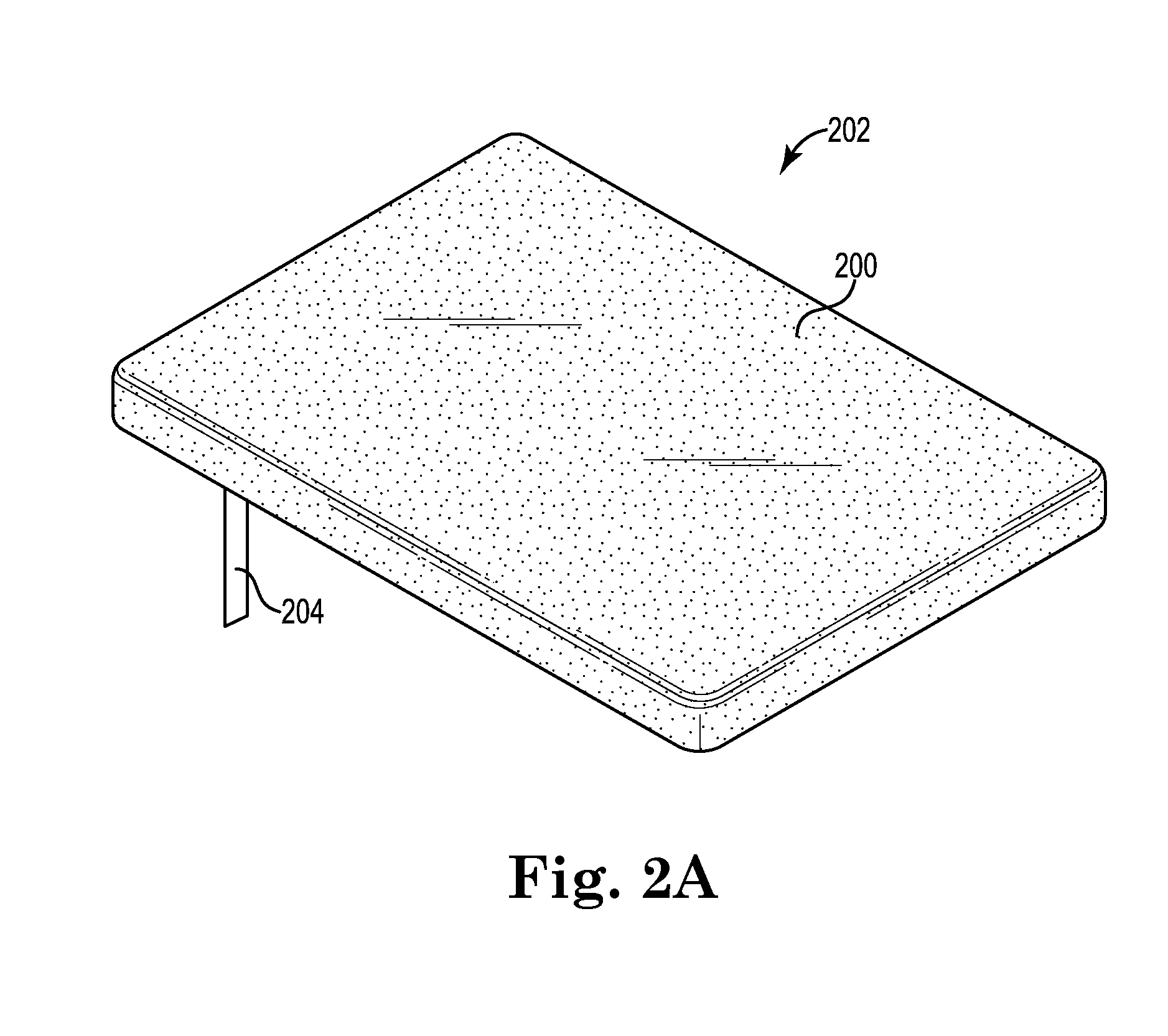Metal-Coated Hard Disk Drives and Related Methods
a hard disk drive and metal coating technology, applied in the direction of mounting head within the housing, electric apparatus casing/cabinet/drawer, instruments, etc., can solve the problems of affecting the operation of the drive. , to achieve the desired pressure and concentration of gaseous components, the effect of reducing the time consumption and difficulty
- Summary
- Abstract
- Description
- Claims
- Application Information
AI Technical Summary
Problems solved by technology
Method used
Image
Examples
Embodiment Construction
[0042]The present invention is beneficially applied in conjunction with any suitable conventional hard disk drive in need of performance improvements. According to the present invention, at least one metal coating is formed over at least a portion of an exterior surface of a hard disk drive.
[0043]A disk drive assembly conventionally includes a base to which various components of the disk drive are mounted. A top cover cooperates with the base to form a housing that defines an encased environment for the disk drive. Any disk drive comprises any of a number of suitable components encased within the housing. The components within the disk drive include, for example, a spindle motor, which rotates one or more magnetic disks at a constant high speed, and an actuator assembly for writing information to and reading information from circular tracks on the disks. The actuator assembly typically includes a plurality of actuator arms extending towards the disks, with one or more flexures exten...
PUM
| Property | Measurement | Unit |
|---|---|---|
| thickness | aaaaa | aaaaa |
| thickness | aaaaa | aaaaa |
| thickness | aaaaa | aaaaa |
Abstract
Description
Claims
Application Information
 Login to View More
Login to View More - R&D
- Intellectual Property
- Life Sciences
- Materials
- Tech Scout
- Unparalleled Data Quality
- Higher Quality Content
- 60% Fewer Hallucinations
Browse by: Latest US Patents, China's latest patents, Technical Efficacy Thesaurus, Application Domain, Technology Topic, Popular Technical Reports.
© 2025 PatSnap. All rights reserved.Legal|Privacy policy|Modern Slavery Act Transparency Statement|Sitemap|About US| Contact US: help@patsnap.com



